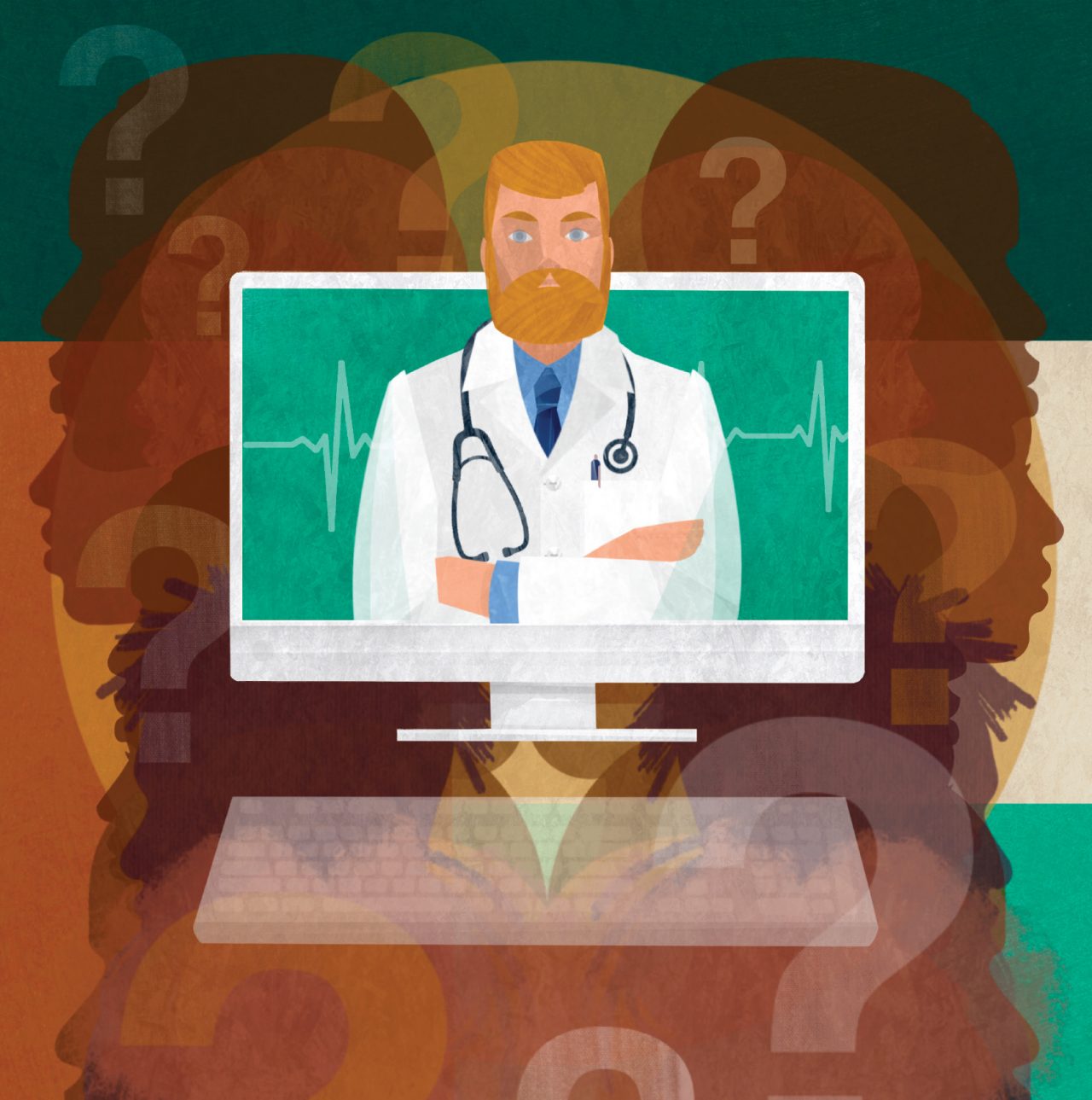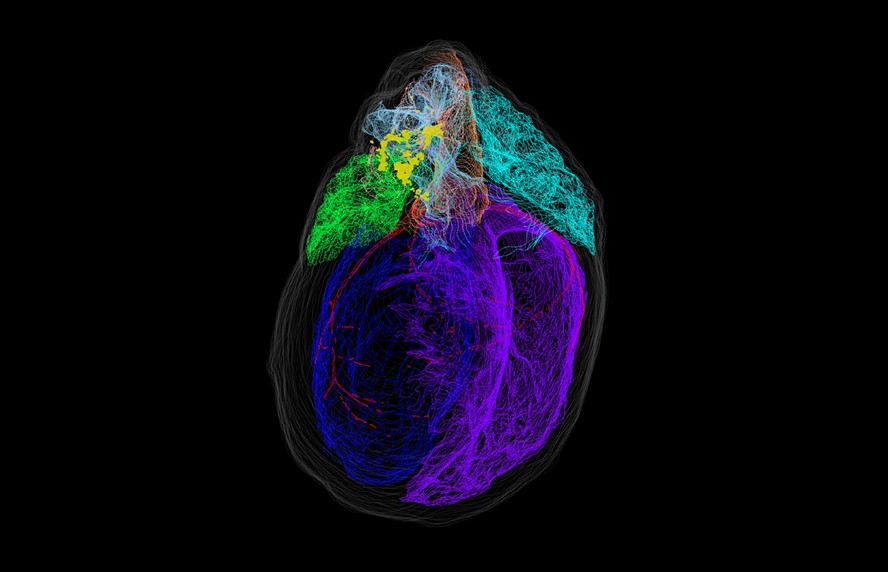RNA Fragments in Health and Disease Messenger RNA (mRNA) are transcribed from DNA in the nucleus and captured by ribosomes sitting on the surface of the endoplasmic reticulum. Ribosomes read the mRNA messages and attract transfer RNA (tRNA) to build the protein components of life(1). But there are many other types of RNA that are then converted into RNA fragments called cP RNA. With the help of a new tool called cP-RNA-seq and others, researchers can see what these cP-RNA fragments are doing in the cell (2). For example, these small RNA fragments are processed further to become piRNA, which silence the jumping genes that cause instability in sperm and egg cells (3); they transfer between immune cells to activate immune reactions to infectious disease (4); and their numbers spike in hormone-dependent tumors like breast and prostate cancer (5), possibly spurring aggressive disease.
RNA Like You've Never Seen Before
New methods to ‘see’ unstudied types of RNA reveal an incredibly abundant regulatory molecule that plays a role in disease and health alike.
The human genome project, a race to map out the code of human life, was supposed to uncover untold secrets of human health and disease. But even before the 15-year project was finished, researchers began to realize that there was much more to understanding life than the string of genes that coded for proteins. How did the cell decide how much of each gene to produce, and when? It became clear that knowing when to turn specific genes on or off could mean the difference between health and diseases like cancer, Alzheimer’s and many others.
In the 1990s, researchers discovered microRNAs, very short sequences (about 22 nucleotides) that came from the region of DNA in between protein-coding genes. These tiny molecules, researchers soon found, were master regulators, fine-tuning the cell’s genetic production. The work opened a new field looking at the cell’s RNA-regulators, all sped by a tool called RNA-seq that could rapidly detect and decode these novel microRNAs.
That tool, however, was limited to detecting RNA types with a specific, but common, sequence on their tails. In the past few years, Yohei Kirino, PhD, and colleagues developed a new set of tools and modified old ones in order to detect the previously un-seeable world of small RNAs. These tools have revealed the properties of these RNAs, where they come from and how they may regulate health and disease.
A number of these new RNA molecules are fragments of other well-known RNA species, such as ribosomal RNA, messenger RNA and transfer RNA, and contain a cyclic phosphate (cP) tag at their end—a different “tail” than microRNAs. Researchers had known of these fragments, but assumed they were simply junk—chopped up pieces meant for the cell’s recycler.
In 2015 and ‘16, Dr. Kirino’s lab published the method to detect these cP-containing RNAs (cP-RNAs). It was simple enough: add a processing step to remove the cP tag from cP-RNAs, before running the usual RNA-seq. With this tool that they called cP-RNA-seq, the researchers began to see just how active these molecules really were.
The cP-RNAs, they showed, were involved in hormone-dependent cancers like breast and prostate cancers. Derived from transfer RNAs (tRNAs), which normally deliver building blocks to a growing protein chain, these cP-RNAs were plentiful, especially in hormone-driven cancers, and appeared to promote cell replication, a key driver of cancer growth.
Dr. Kirino and colleagues went on to find other types of cP-RNA involved in unrelated diseases, from neurodegeneration to infection. During infection with tuberculosis, for example, the researchers found cP-RNA present at 1,000 times the concentration as in healthy individuals. What’s more, these cP-RNAs appeared to act as a cytokine, spreading the alarm for inflammation and immune activation. Unlike cytokines, which are a chemical signal, the cP-RNA would jump across membranes within an exosome bubble released from one cell and absorbed by another. Once inside, they activate a toll-like receptor,TLR-7, that detects and responds to RNRNA molecules and activates immune cells.
Most recently, the group discovered that cP-RNAs were involved in helping maintain genome integrity in sperm and egg cells. They showed that cP-RNAs are the precursors to to piRNA, a familiar and essential molecule that silences jumping genes—transposable elements—in these germline cells. This silencing prevents jumping genes from introducing mutations that can cause harm or even kill the cell.
“The Computational Medicine Center is developing methods, computational and experimental, for identifying different classes of RNA and determining their function. Dr. Kirino’s work uncovered an intriguing class of RNA that had remained ‘invisible’ to standard sequencing approaches,” says Isidore Rigoutsos, PhD, Richard W. Hevner Professor and Director of the Computational Medicine Center.
The Kirino group developed other tools to see the unseen RNA world. They created the YAMAT-seq, an efficient method for sequencing tRNA, and the four-leaf clover qRT-PCR to quantify these twisted molecules; and the Dumbbell-PCR, a method to quantify specific variants of microRNA and other small RNAs.
RNA Fragments in Health and Disease Messenger RNA (mRNA) are transcribed from DNA in the nucleus and captured by ribosomes sitting on the surface of the endoplasmic reticulum. Ribosomes read the mRNA messages and attract transfer RNA (tRNA) to build the protein components of life(1). But there are many other types of RNA that are then converted into RNA fragments called cP RNA. With the help of a new tool called cP-RNA-seq and others, researchers can see what these cP-RNA fragments are doing in the cell (2). For example, these small RNA fragments are processed further to become piRNA, which silence the jumping genes that cause instability in sperm and egg cells (3); they transfer between immune cells to activate immune reactions to infectious disease (4); and their numbers spike in hormone-dependent tumors like breast and prostate cancer (5), possibly spurring aggressive disease.



